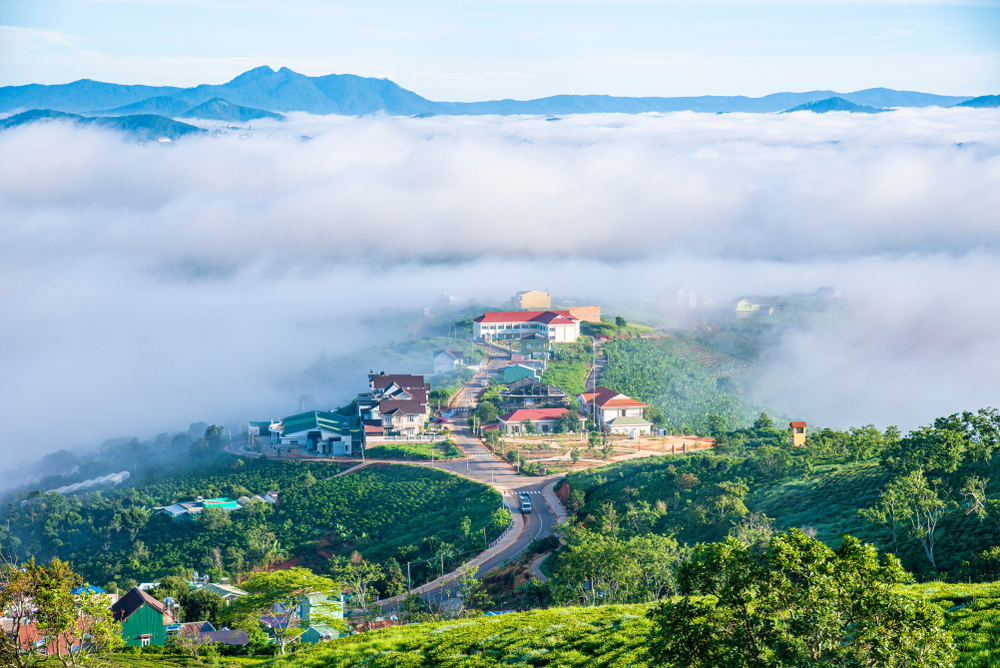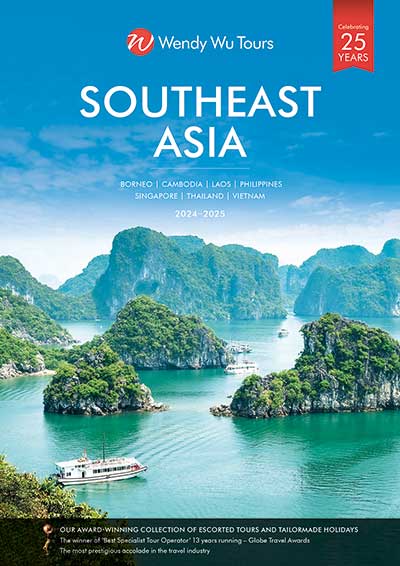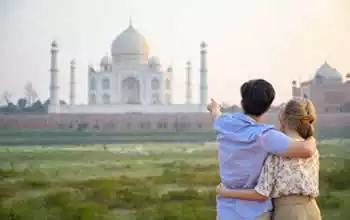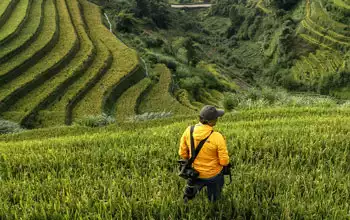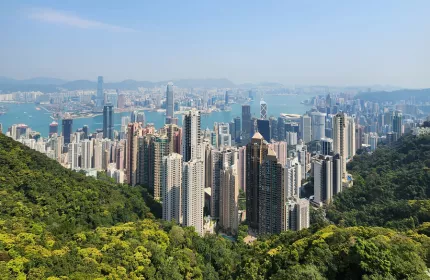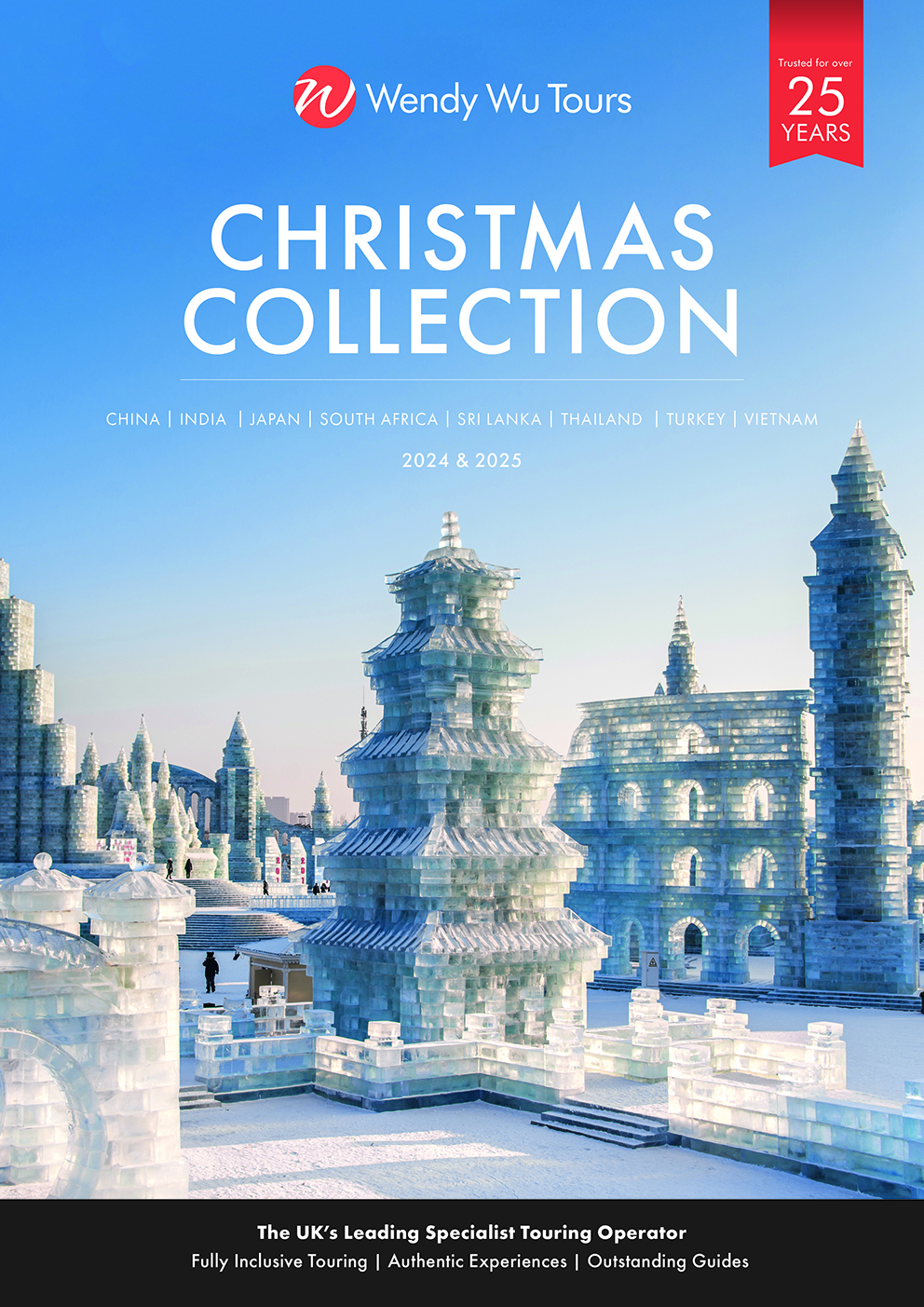Alongside its famous historical sites and architectural marvels, Vietnam is also home to a kaleidoscope of natural scenic wonders. But which ones are an absolute must-see? We’ve curated our top ten Vietnam scenic attractions to help you decide.
1. Halong Bay
Halong Bay’s natural beauty is simply awe-inspiring, a vast glistening cove with thousands of sculpted limestone karst towers and islets jutting out from the emerald water. Halong Bay translated means ‘descending dragon’ – legend tells that the valleys and gorges here are the teeth of Mother Dragon and her children, summoned down by the revered Jade Emperor to protect the country from invaders.
The bay is a patchwork of floating villages and locals going about their daily lives. The best way to experience it is to drift through the striking emerald-green islands on a cruise, taking in the rows of junk boats and exploring caves, islands and floating villages as you go.
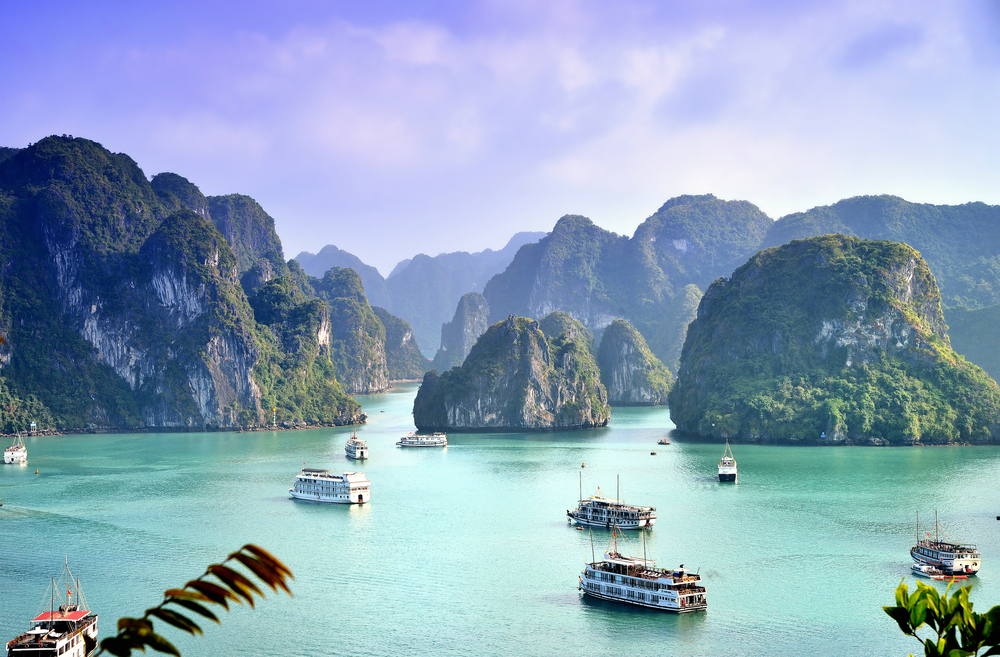
2. Mekong Delta
An endless lattice of waterways, the Mekong Delta is home to a beautiful patchwork of rice paddies, orchards, palm trees, sugarcane plantations and vegetable fields. Floating through the delta, you’ll soon discover that the water is always bustling – with floating markets full of boats plying the water piled high with local produce, locals commuting to and from their villages or water buffalo wallowing in the shallows.
Away from the buzz of the cities, the delta offers a natural and tranquil retreat and is a delightful place to explore. The best way to see the Mekong is to cruise the river itself. Hop aboard our very own Victoria Mekong, a purpose-built, eco-friendly vessel that uniquely visits some hidden corners of the delta.
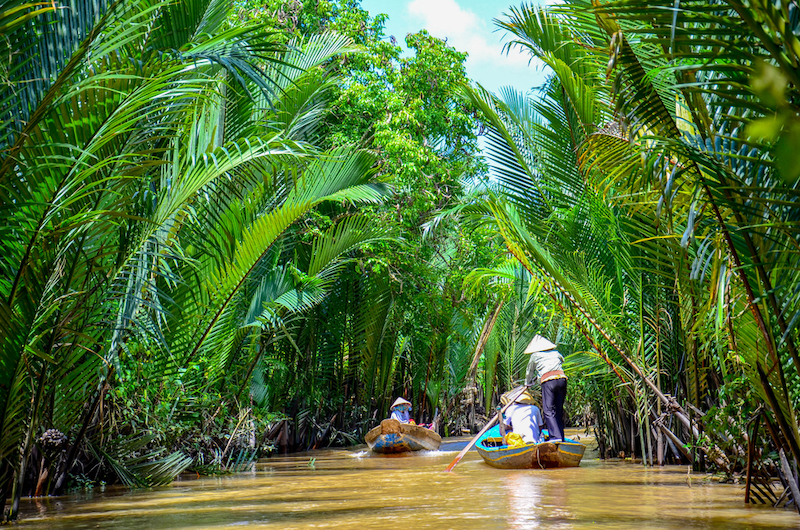
3. Sapa
Sprinkled across the hills of the north, Sapa is a serene mountain town far away from Vietnam’s everyday hustle and bustle. On the brink of a plunging valley, edged by tumbling rice terraces and watched over by the striking Mount Fansipan, the beauty of Sapa is genuinely awe-inspiring.
After spending time in Vietnam’s fast-paced cities, Sapa is refreshing both in terms of its climate and the slower pace of life. Sapa is the place to meet the colourful hill tribe villagers and is also Vietnam’s top spot for trekking; you’ll see avid hikers resting up in Sapa before heading upwards to explore the cascading rice terraces and hillside villages!
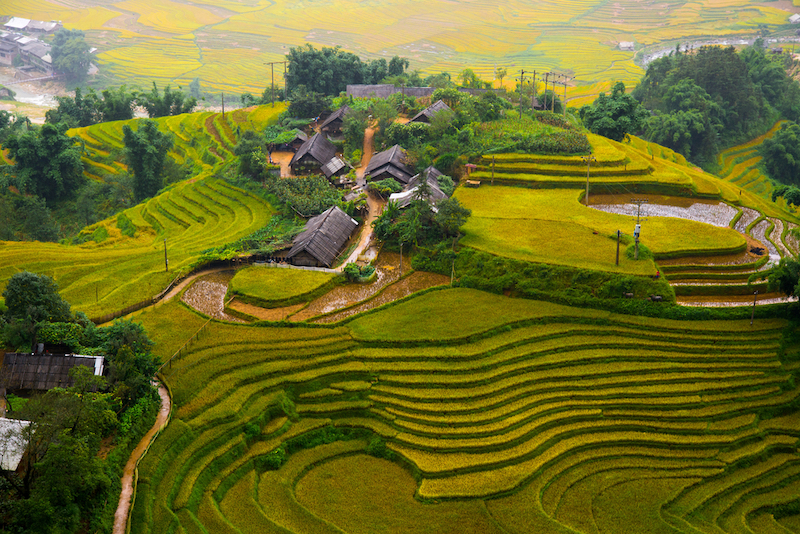
4. Hai Van Pass
Stretching over 20 kilometres, the Hai Van Pass is one of Vietnam’s most dramatic highways. Located on the outskirts of Danang and not far from Hoi An, the pass offers some of the best views from the heights of the Annamite Mountain range. The range extends over 1,100 kilometres through Laos, Vietnam and parts of Cambodia.
The road weaves its way through steep hills offering wonderful views of the lush tropical jungle, sparkling ocean and white sandy beaches. Once a physical division between kingdoms, the pass is now a dramatic and scenic carriageway and a ‘must-see’ on a Vietnam visit.
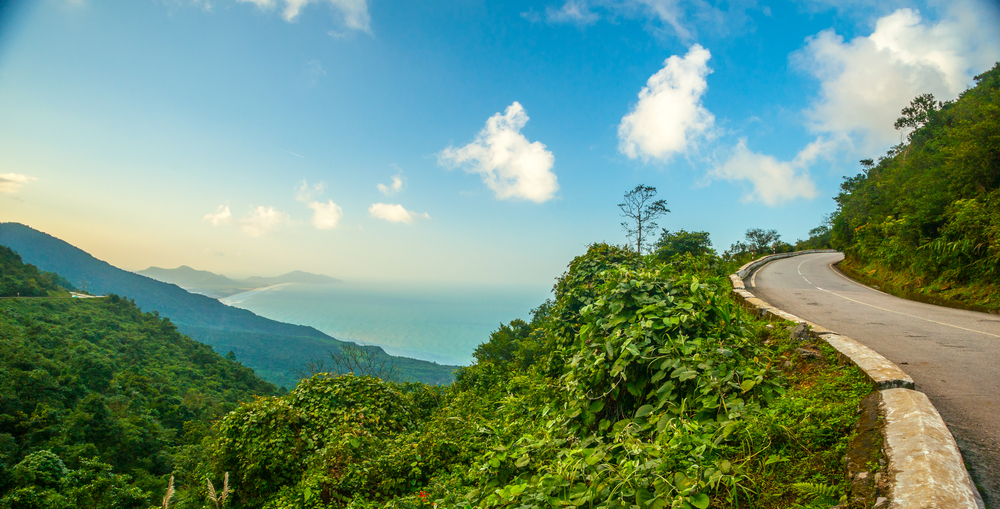
5. Mount Fansipan
The highest peak in Vietnam, Mount Fansipan, offers some of the most jaw-dropping views in Vietnam. With swirling clouds and forested slopes, it’s a sunrise and sunset lover’s dream. The mountain is 3,100 metres above Sapa, and you can journey to the top by cable car in under 15 minutes.
On your way up, admire the quaint villages, rice terraces and rocky cliffs below. Along the way, you will notice monasteries and pagodas dotted amongst the landscape, many of which pilgrims would have visited hundreds of years ago.
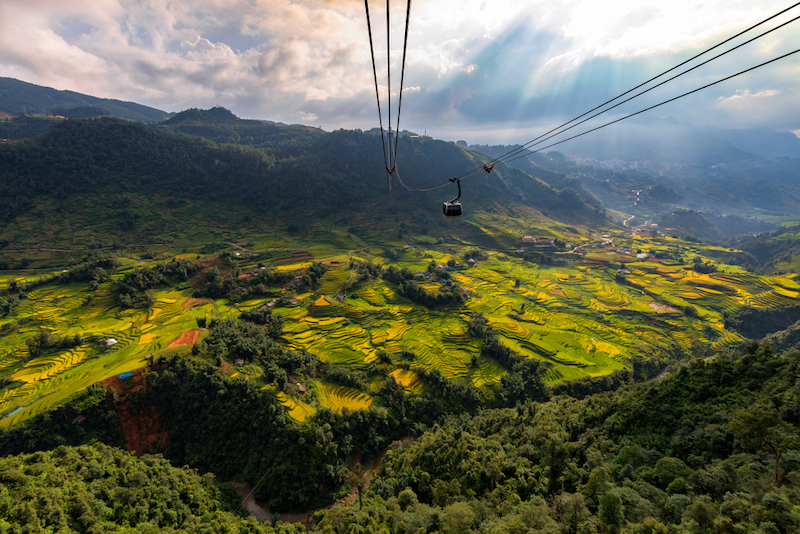
6. Phu Quoc Island
Lined with white sands and cloaked in gorgeous greenery, Phu Quoc is an idyllic beach escape off the coast of Vietnam. Once a sleepy backwater, the island is now a tourist hotspot, with resorts and busy harbours around every corner. The waters are teaming with biodiverse reefs and an abundance of sea life – all waiting to be explored by snorkelling or kayaking.
As you take in the soft ocean breeze and the brilliant turquoise waters, you’ll soon understand why Phu Quoc has been nicknamed the ‘Pearl Island’. Make sure you also savour some of the island’s famous delicacies whilst here, including fish sauce and pepper.

7. Perfume River, Hue
The beautifully serene Perfume River divides the city of Hue in central Vietnam. Its distinctive name comes from the floral scent it exudes during the peak of autumn when the tropical orchids on the trees upstream fall into the water. The river was once a hive of activity when boats were the only way to cross into the city’s other half.
With bridges now providing adequate transport across the river, spending time on the river today is a relaxing experience. Sunset is the best time to enjoy a traditional dragon boat ride – not only does the city come to life in neon technicolour, but this is prime time for wildlife on the water’s edge, with water buffalo making a frequent appearance.
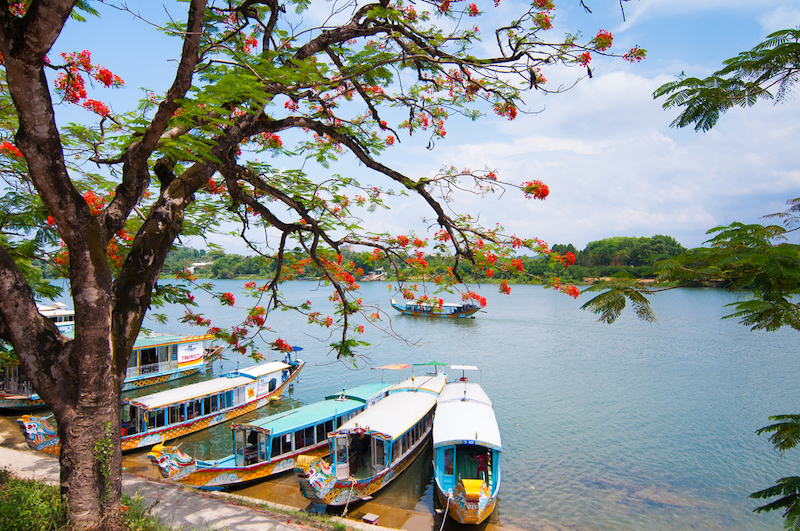
8. Da Lat
This former French hill station still has traces of its heritage with its French architecture and iconic patisseries. Coupled with the pine forests, this lends the town a unique Franco-Swiss charm unlike anywhere else in Vietnam. Da Lat’s flower industry is booming thanks to the town’s unusual climate. Popular exports include hydrangeas, golden everlasting flowers and three types of marigolds that blossom in winter.
9. Ancient floating markets
Floating markets are a natural evolution of river life. With most business conducted on the water, a gathering of trading boats fits well with life here. Cai Rang is one of the most fascinating floating markets in the world. Situated in the Mekong Delta, it was established in the early 1900s during the Nguyen dynasty.
Unable to call out their wares due to the distance between the furthest boats, the sellers have found an alternative. Each vessel is fashioned with a bamboo mast from which a sample of the produce is hung. This allows buyers to see which boats they need to visit from a distance.
If you are keen to experience this ancient trading network first-hand, be prepared for an early start. The markets open well before sunrise, with some starting as early as 3am and finishing by mid-morning.
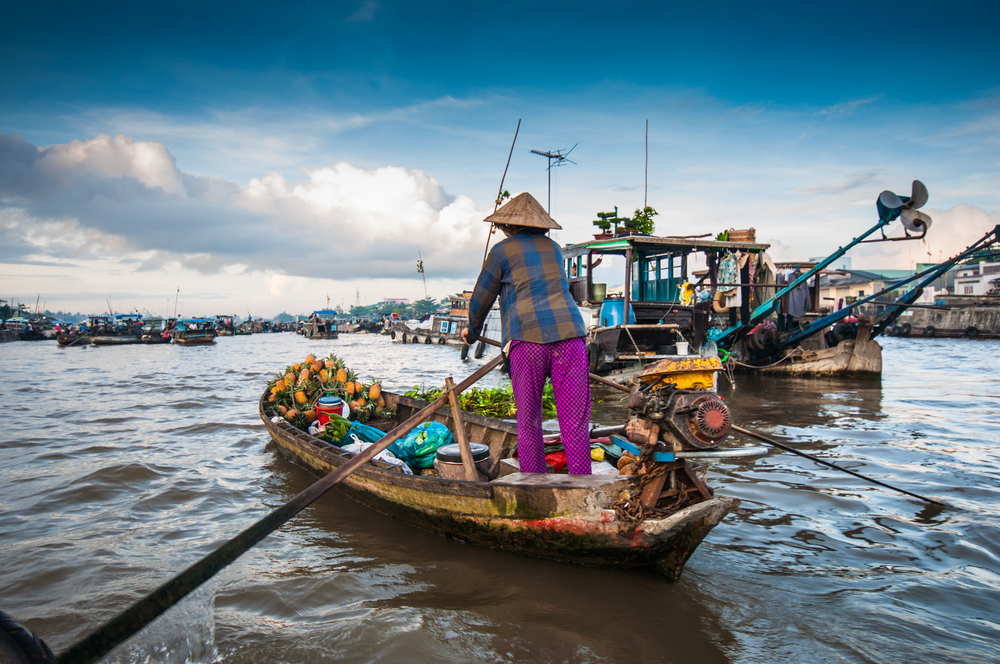
10. Ninh Binh
From Ninh Binh, you can travel down the Ngo Dong River and into the stunning landscape of Tam Coc.
The Tam Coc scenery combines rice fields, rivers and limestone cliffs, culminating in a jaw-dropping landscape. Tam Coc consists of three river caves (Hang Ca, Hang Hai, and Hang Ba) that boats float through on the way down the Ngo Dong River. The rhythmic paddling of the local women propelling their boats compliments the region’s serenity as they glide between the lush paddy fields, overshadowed by striking karsts.
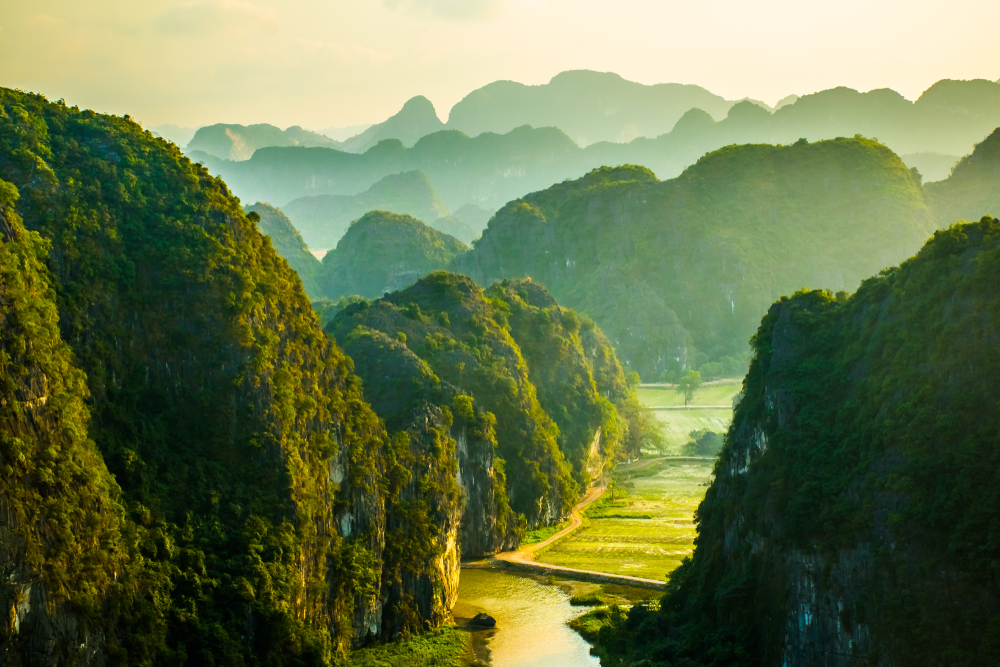
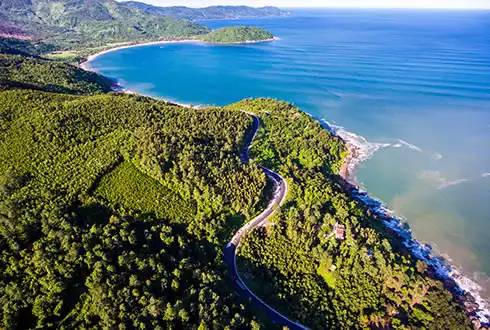
Vietnam Panorama
18 days from £3090pp
Fully Inclusive of Tour & Flights
Mekong Delta - Cu Chi Tunnels - Po Nagar Cham Towers - Halong Bay Cruise
